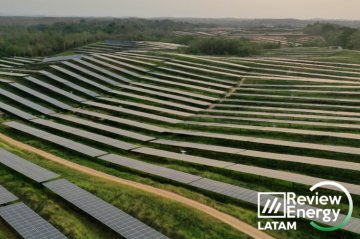
UK faces critical moment to show leadership in hydrogen production
A report published by RenewableUK urges the Government to work closely with the world-class green hydrogen industry to implement new policies to enable the country to step up the rate at which they build major projects as fast as possible. "This would allow us to seize the opportunity to develop a new market big enough to grow new supply chains and kickstart a major new green energy industry at scale in the UK", RenewableUK says.
The document, entitled “Surveying the UK’s Green Hydrogen Supply Chain Capability” warns that the UK stands at a critical juncture, with other countries taking steps to overtake us in the global race to create thousands of jobs and attract billions in private investment in green hydrogen in the decades ahead.
Green hydrogen is made in state-of-the-art electrolysers which split water into hydrogen and oxygen, with zero carbon emissions. The UK is home to world-renowned electrolyser companies like ITM Power and Ceres whose cutting-edge technology has been licensed worldwide. The UK’s pipeline of electrolyser projects already stands at 1.5 gigawatts (GW) with a significant amount of new capacity expected to enter the pipeline soon, although only 4 megawatts (MW) are currently fully operational. The Government has set a target of 10GW of low carbon hydrogen by 2030, at least half of which will be green hydrogen.
To reach this target, the recommendations set out in the report include building multiple large-scale projects as soon as possible to demonstrate that there is a viable market for investors and suppliers. Government support schemes, such as the Hydrogen Business Model and the Net Zero Hydrogen Fund, will play key roles in this, so their roll-out needs to be speeded up. Ensuring that contracts are finalised and awarded in time, and that future funding allocation rounds up to 2030 are clarified, will be vital for developers.
"If the UK does not step up, it risks being left behind due to ambitious tax incentives and subsidies offered abroad, such as the United States Inflation Reduction Act, which may attract investment and prospective suppliers away from this country. The report recommends that Ministers should consider consulting with the industry and setting up a joint working group to establish how tax incentives and other financial institutions, such as the UK Infrastructure Bank, could be used to make the UK a more competitive market for investment in the green hydrogen supply chain", RenewableUk explained.
The report points out that "we also need a new Government-industry taskforce to establish a roadmap setting out in detail how the UK can reach at least 5GW of green hydrogen by 2030". New pipelines will be needed to carry green hydrogen both locally and to markets in Europe, as well as underground storage in disused gas fields, so the UK must take swift action to invest in this infrastructure ahead of time. Most green hydrogen will be produced using electricity generated by offshore wind, so a detailed study of how these technologies can operate alongside each other would also help to create more flexibility in our electricity system, strengthening Britain’s energy security.
RenewableUK’s Senior Policy Analyst for Emerging Technologies Laurie Heyworth said “the UK has the potential to become a global leader in green hydrogen. We’re at a pivotal moment at which we can take decisive strategic action, enabling us to seize the opportunity to deliver growth and jobs by developing robust local supply chains in the burgeoning green hydrogen industry, creating opportunities to export our technology worldwide”.
“But the development of green hydrogen has been hampered by a lack of clear policy direction and investment in comparison to blue hydrogen made from fossil fuels. Delays in bringing in vital financial support mechanisms have slowed down our ability to build projects on a scale big enough to act as proof points for investors and suppliers to enable us to grow our domestic supply chain. This report sets out how these issues can be addressed, with industry and Government working together to maximise the economic and environmental benefits which this innovative technology offers”, she added.








Comentarios
Sé el primero en comentar...